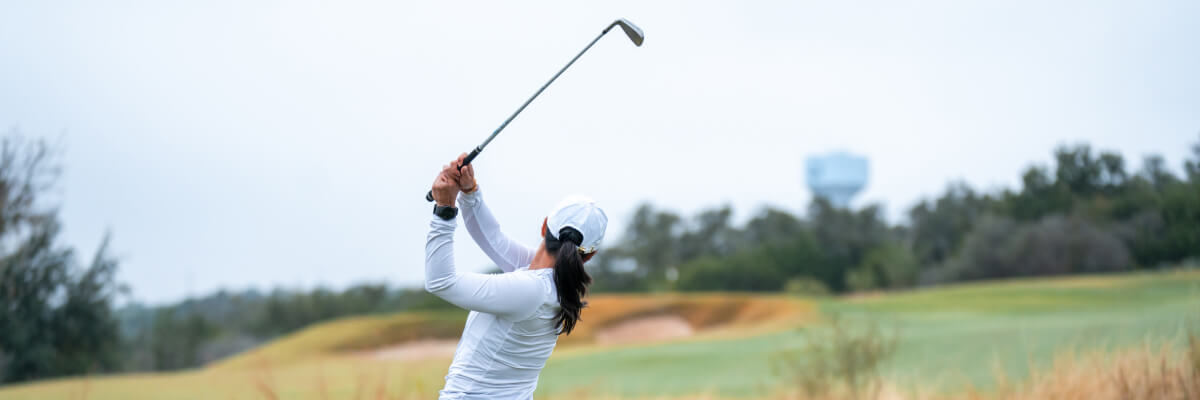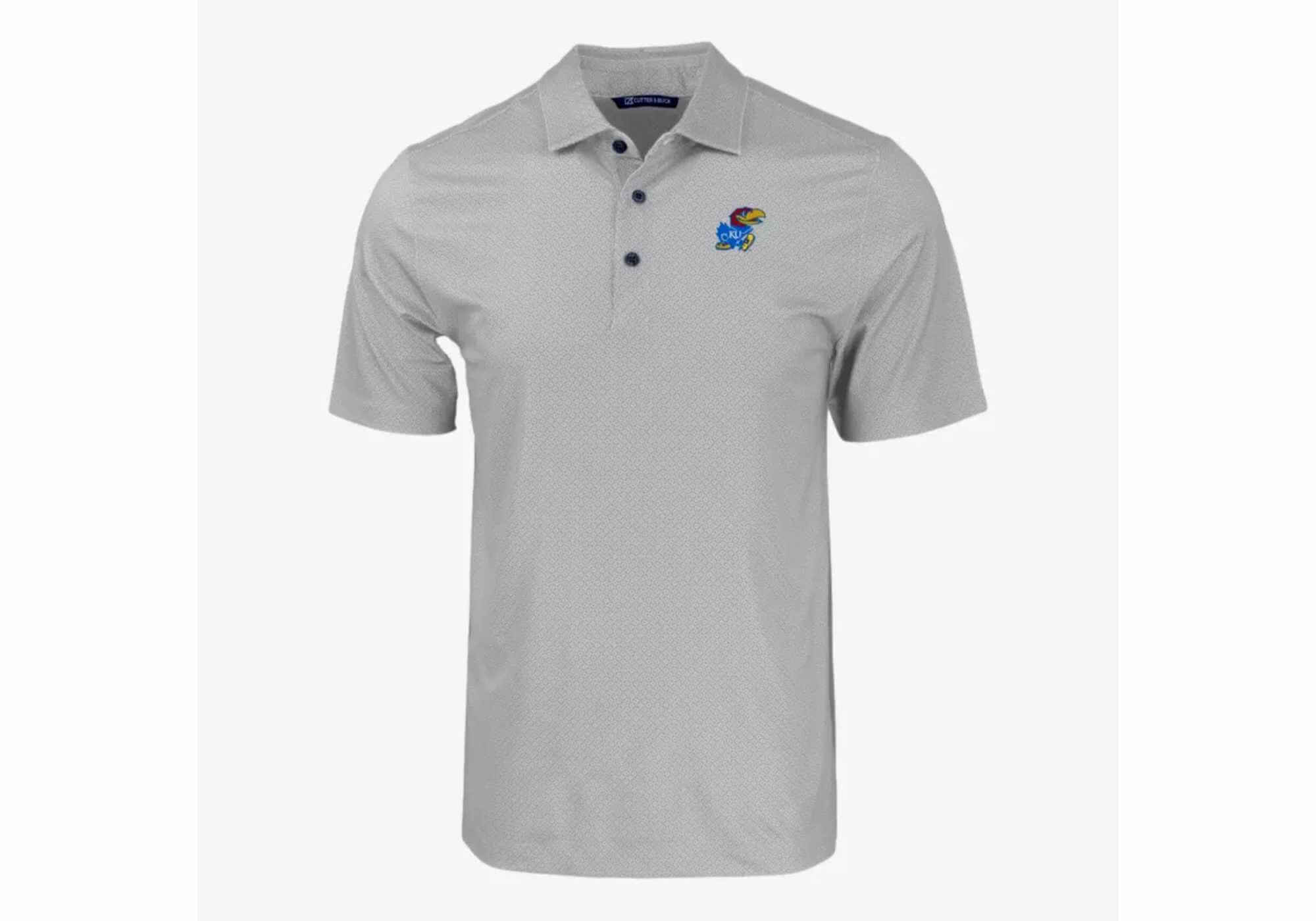In the latest edition of I Tried it, Jack Hirsh reviews the new Garmin Approach R50, a one of a kind all-in-one launch monitor and simulator.
The post I Tried It: The Garmin Approach R50 is a first of its kind launch monitor appeared first on Golf.
In the latest edition of I Tried it, Jack Hirsh reviews the new Garmin Approach R50, a one of a kind all-in-one launch monitor and simulator.
The post I Tried It: The Garmin Approach R50 is a first of its kind launch monitor appeared first on Golf.
I didn’t want to be the one to tell you this but the cops are after you.
Do you have any idea how fast you were driving back there coming off the 13th tee?
No, not the speed of your golf cart—we’re talking about your clubhead speed.
Unfortunately, the golf ball you are playing doesn’t jibe with your swing speed. You are only swinging your driver at 92 mph but the compression of your golf ball is best suited for swing speeds above 105 mph.
We’ll let you off with a warning this time—and a new sleeve of balls better suited for your game—but next time you might not be so lucky.

Roger Cleveland, one of the game's most revered club designers, has returned to the brand at which he made his name: Cleveland Golf.
The post Why Roger Cleveland’s return to Cleveland Golf is a big deal appeared first on Golf.
Ben Griffin and Michael Kim have taken three weeks off combined the whole year. The reason why has to do with the Masters.
The post These Masters chasing pros have barely taken a week off all year appeared first on Golf.
A week after their respective acts of golf rage went viral, Adam Hadwin, Patton Kizzire and Sahith Theegala reflected on their behavior.
The post ‘What amateur can’t relate?’ After viral meltdowns, 3 pros reflect on actions appeared first on Golf.
How to watch the 2025 Texas Children's Houston Open on Thursday, including full Texas Children's Houston Open TV coverage and streaming info.
The post 2025 Texas Children’s Houston Open Thursday TV coverage: How to watch Round 1 appeared first on Golf.
The inaugural TGL season came to a close last night with the Atlanta Drive defeating New York Golf Club, two games to none, to win the first championship.
We’ve been talking a lot about the new tech-infused simulator league around the MyGolfSpy office over the past few months. Some of us watched a few minutes and never went back. Some of us have been mildly entertained by it (or at least put the broadcast on as background noise). Some of us attended an event and enjoyed the experience.
All of us have been critical of the inferior technology they are using to make this whole league run.
But now that we are at the end of the first season, it’s time to take real stock of how the league performed. Where is thing headed?
My final grade for TGL is a B-minus. While the league is a net positive for professional golf, it feels like it has a high floor with a low ceiling.
Sometimes, knowing what not to buy is just as important as knowing what to buy. In our golf shoe testing this year, we evaluated nearly 50 different pairs. While we found plenty of shoes worth recommending, there are always a few that aren’t worth your money. Here’s a quick look at three shoes we think are worth your money and two that you might want to skip. Just a heads up: these aren’t necessarily the absolute best or worst from our tests but they’re insights we noticed during the testing process.
The Skechers golf shoes did well in our 2025 testing. This Go Golf Prestige SL is a comfortable spikeless shoe with a more traditional look. There was a time when golf shoes with a traditional look screamed blisters and pain. That’s no longer the case.
The podiatrist-certified Arch Fit® insole and ECO FLIGHT cushioning prove Skechers spent some time developing this one. The Prestige SL didn’t win any traction or stability categories but earned a top five in both categories. This is the third-best spikeless shoe of 2025.
Who Should Buy:
Golfers place comfort and convenience at the top of their list (slip-in shoes).
Who Should Skip:
Golfers requiring maximum torsional stability other shoes offer better solutions for high swing speeds.
























We tested 37 drivers for 2025 and four of them are PINGs. We tested the PING G430 MAX 10K because it was the best driver of 2024 and it earned second place in 2025. The G440 LST, a new release, grabbed third. If you are in the market for a new PING driver, we will review all the results of the 2025 Best Driver testing and look at some lower-priced PING drivers that are still available with limited shaft options. Here is everything you need to know about the best PING drivers.
We give the best driver of the previous season a chance to compete in our most recent driver testing. The PING G430 MAX 10K was the best for 2024 and earned second best in 2025. It was the only driver in the 2025 test to score higher than 9.0 in distance, accuracy and forgiveness.
It’s about as well-rounded as you’ll find.
Testers noted that it’s tough to hit a truly “bad” drive with the PING G430 MAX 10K. PING did keep this one in the lineup for 2025 so it’s not hard to find one that meets your specifications.
Buy this if:































After nearly 30 years as chief club designer at Callaway, renowned wedge designer Roger Cleveland is going home.
Cleveland Golf is announcing that Cleveland will be returning to the company he founded in 1979. His official title will be “Founder and Advisor.”
“We’re absolutely thrilled to welcome Roger back to the family,” says Cleveland Marketing VP Chris Kircher. “His deep-rooted history with our brand makes this not just a homecoming but a special moment to be able to rejoin forces with one of the most iconic names in golf.”
“Coming back to Cleveland Golf is a special moment for me,” Cleveland said in a press release. “This company has always been close to my heart and I’m excited to contribute once again to its legacy of innovation and performance.”
The company says Cleveland will be ideating and collaborating with its PGA Tour and R&D teams as an advisor. He’ll provide input on new products and design ideas.





Golf ball fitting finally has some momentum. Now, in a perfect world, every ball fitting experience would involve actually hitting golf balls. That’s how Titleist and Bridgestone approach it but it’s not lost on me that access to in-person fitting options is limited.
To backfill the void, just about everyone who makes a golf ball and even some that don’t (I’m looking at you, PING) have created online fitting tools designed to help golfers home in the right golf ball.
Can any of them replace an in-person fitting? Not really but it’s also true that most are a step or two above not getting fitted at all.
One of the more recent entries in the online ball fitting world is Golf Galaxy’s Golf Ball Assistant.
Before we get to how well it works, I want to start by saying I believe that the Golf Ball Assistant’s basic approach to ball fitting is better than most. Like some other ball fitting tools we’ve looked at, it’s not contrived to be as much a marketing tool as a golf ball recommender.







We live in the era of big data. While that’s mostly awesome, with countless statistics available about your golf game, it’s easy to feel overwhelmed when trying to analyze your performance.
Fear not.
To help simplify things for you, we asked our friends at Shot Scope to identify the five most important stats amateurs should focus on if they want to shoot lower scores.
Even for holes that end with “put me down for an eight,” everything starts at the tee box. Even for those who cling to the misguided principle of “drive for show, putt for dough”, if you can’t get off the tee and reach the green effectively, does your putting even matter?
Knowing your tee shot tendency is a simple way to shave strokes without taking a lesson or buying a new driver. If your data shows you rarely miss left but frequently drift right, simply adjust your aim accordingly and work with your natural tendency.







It’s tourney time! For all the basketball fanatics out there, March is arguably the best time of the year. The gear in this article focuses on supporting your favorite team’s colors while hitting the links.
And if you don’t see your squad below, no worries! More teams are available past the links. Let’s get into the Madness!
Leave no doubt for whom you’re cheering during this year’s NCAA Tournament with the Collegiate pix line from TaylorMade. The Collegiate pix adds a sporting twist to Clearpath Alignment. Paired with the softest five-layer ball on Tour to give you maximum control without giving up distance, you’ll be “cutting down the nets” by the time you sink your putt on 18. A variety of teams is available so grab yours today.
I’d argue that nothing screams school pride like your favorite college’s mascot. They bring energy to every game to keep the crowd fired up from tip-off to the final buzzer. Bring that same energy to your golf bag with a mascot headcover! You’ll leave zero doubt who you’re backing this March Madness when stepping to the tee box.
I’m a sucker for a comfortable quarter-zip and this offering from Columbia fits the bill. A polyester Sweaterface Fleece provides warmth and comfort and the front chest pocket provides you with a spot to stash your tee between shots. Add your school’s logo to the mix to show your support no matter where you’re watching the game.





I stumbled into a golf gift exchange I never imagined, 150 seaside miles down the coast from Melbourne, Australia.
The post My Masters gift exchange at an Australian golf course in the middle of nowhere appeared first on Golf.
How tight should you grip the club? According to GOLF Top 100 Teacher Martin Hall, Tiger Woods was told at the 1998 Masters Champions Dinner.
The post What’s the correct grip pressure? Tiger Woods was told … at Masters Dinner appeared first on Golf.
Dave Pelz was one of the greatest minds in golf instruction. Here are 10 brilliant short-game tips from the legend himself.
The post 10 brilliant short-game tips from teaching legend Dave Pelz appeared first on Golf.
Dave Pelz, who died Sunday at 85, was a golf-teaching legend. Here's how he changed the way the game is studied, taught, played and enjoyed.
The post Dave Pelz was a short-game genius. But his smarts extended far beyond appeared first on Golf.
Longtime CBS commentator Jim Nantz has set a target retirement date of April 14, 2036 -- after the final round of the 100th Masters at Augusta National.
Is Bubba Watson the best shot-shaper in golf? He shares his tricks for working the ball and tries helping us moving it both ways.
The post Bubba Watson taught me how to hit crazy hooks and slices appeared first on Golf.
© 2025 GolfLynk.com a division of Outdoorsmen.com